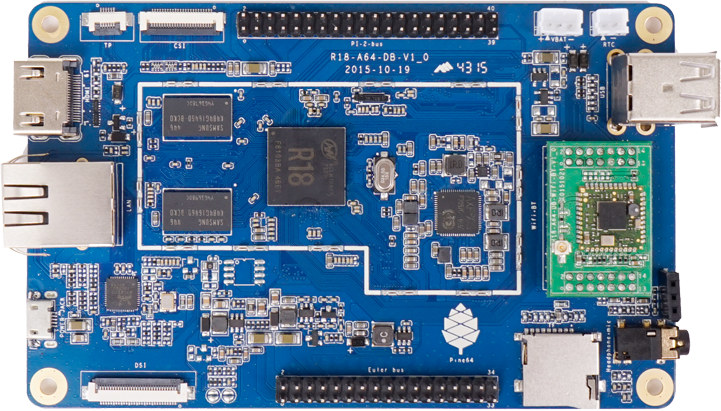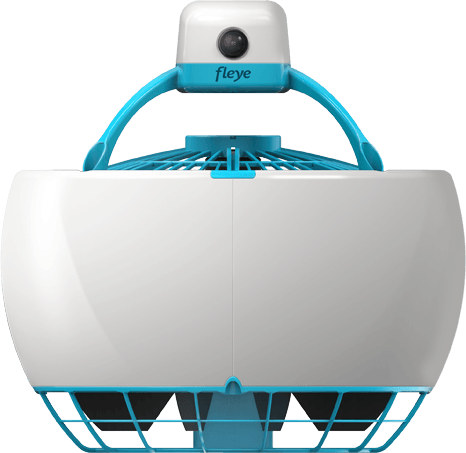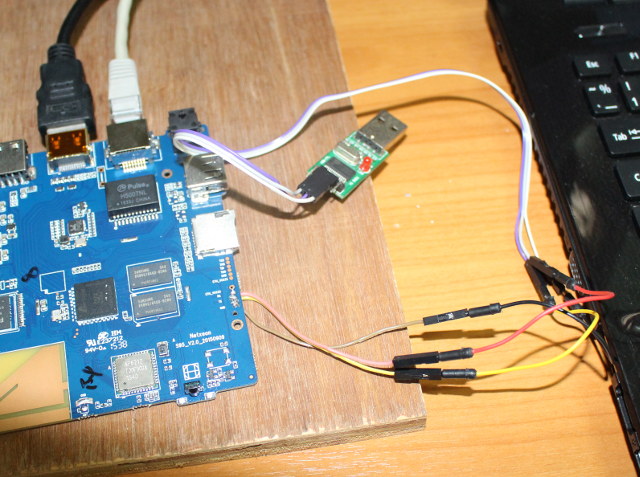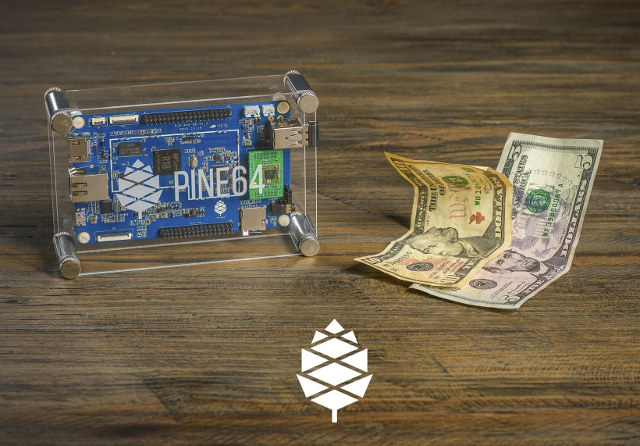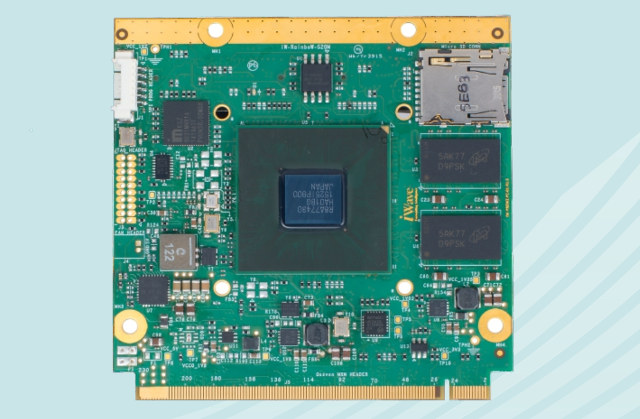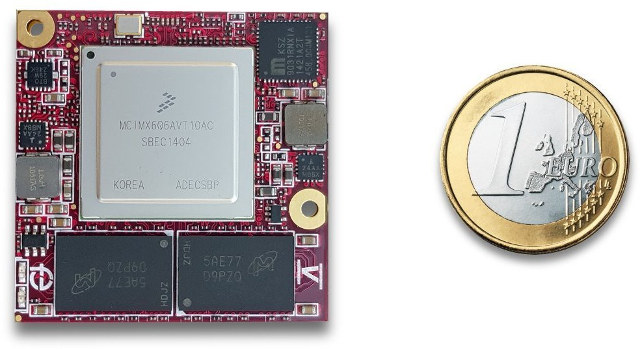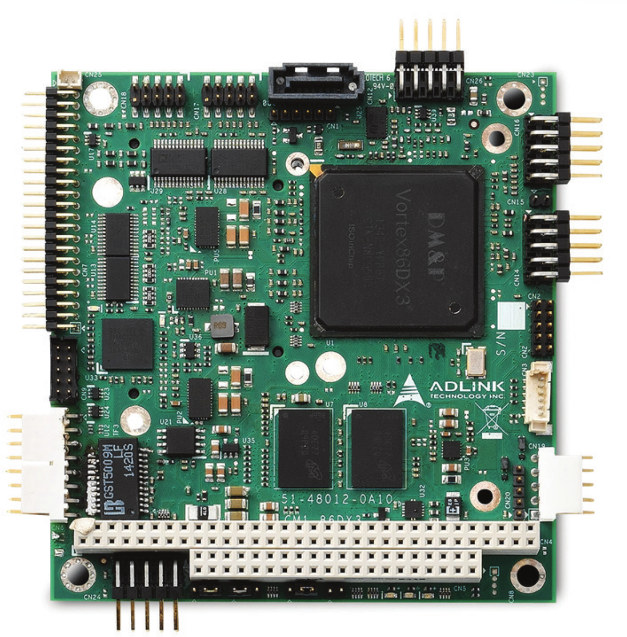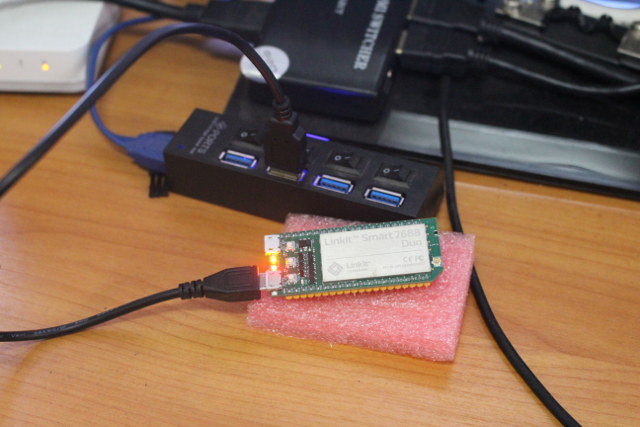As previously announced, PINE64 $15 64-bit ARM Linux computer was due to launch on December 9, and the Kickstarter campaign is now up, and the shipping costs are $7 to the US, and $12 to the rest of the world. The name have changed to PINE A64 and PINE A64+ since the first announcement, but the specifications have mostly not changed for th two boards with an Allwinner quad core Cortex A53 processor, 512MB to 1GB RAM, a micro SD slot for storage, Gigabit Ethernet, HDMI 1.4, USB ports, and some other expansion headers for I/Os, displays or cameras. The PINE A64+ however now has an option for 2GB for $29, and we’ve got a bit more information about optional modules and accessories: Wireless module with WiFi and Bluetooth adapter Zwave adapter 7″ LCD touchpanel (PINE64+ only) Dry contact I/O board 5MP MIPI CSI camera Various sensors Various remote controls […]
Fleye is a Safe, Robust and Developer Friendly Drone Powered by NXP i.MX6 Processor (Crowdfunding)
In most cases, it’s a pretty bad idea to touch a drone while it’s flying, as you could potentially hurt yourself and others with the blades, so a startup based in Belgium has decided to design a safe drone with the blades hidden under a shell surrounded by protective grids, and with features such as obstacles avoidance. The design also makes the drone sturdier, and less prone to breakage should it fall or hit obstacles. The drone, dubbed Fleye, is based on NXP i.MX6 dual core processor, runs a Linux OS built with the Yocto Project, and the company also plans to provide APIs, and mobile SDKs to allow the developer community to experiment with the drone, and/or create mobile apps. Main hardware features of Fleye drone: SoC – Freescale NXP i.MX6 dual or quad core ARM Cortex A9 processor @ 800 MHz with Vivante GPU System Memory – 512 […]
How to Run Headless Linux on Amlogic S905 Devices Such as MINI MX or K1 Plus
A few week ago, I had been informed that Amlogic S905 U-boot and Linux source code was released, and one person use the code and other resources to load a minimal Ubuntu 14.04 image to his K1 Plus TV box and released the installation instructions and the image (Thanks olin!). I also have K1 Plus here, but since I’ve just finished reviewing Beelink MINI MX, I decided to use the latter instead. The instructions below boot Linux from the (micro) SD card, and can still boot Android if you remove the SD card. Modifying U-boot environment The instructions include opening the box, and connecting or soldering a USB to TTL debug board to access U-boot and change some parameters. But later once an image with network is working, you could also build and load fw_setenv and fw_saveenv, and do the same steps with an Android shell and without the need […]
$15 PINE64 64-Bit ARM Single Board Computer is Powered by Allwinner R18 Processor (Crowdfunding)
It looks like Next Things’ C.H.I.P computer with Allwinner R8 processor will soon have a big brother with PINE A64 board powered by Allwinner R18 / A64 quad core Cortex A53 processor, and made by a US start-up also called PINE 64. PINE A64 and PINE A64+, a version with more memory and features, will have the following specifications: SoC – Allwinner R18 (based on Allwinner A64?) quad core ARM Cortex A53 processor @ 1.2 GHz with Mali-400MP2 GPU System Memory PINE64 – 512 MB DDR3 PINE64+ – 1 GB DDR3 Storage – micro SD slot supporting up to 256 GB Video Output HDMI 1.4 up to 4K resolution @ 30 Hz PINE64+ only – 4-lane MIPI DSI connector and touch panel connector Video Codecs – H.265 up to 4K Audio – HDMI, 3.5 mm headphone jack Connectivity PINE64 – Fast Ethernet + optional WiFi & Bluetooth module PINE64+ – […]
iWave Systems iW-RainboW-G20M-Q7 SoM Features Renesas RZ/G1M Cortex A15 SoC
iWave Systems has unveiled a new Qseven 2.0 compliant system-on-module part of their RainboW family with iW-RainboW-G20M-Q7 module powered by Renesas RZ/G1M dual core ARM Cortex A15 SoC, and targeting industrial and automotive applications with over 10 years of support. iW-RainboW-G20M-Q7 module specifications: SoC – Renesas RZ/G1M dual core ARM Cortex A15 @ 1.5GHz with PowerVR SGX544MP2 GPU @ 520MHz System Memory – 1GB DDR3(expandable) Storage – 4GB eMMC Flash (expandable) + 2MB SPI NOR Flash for boot code, and optional Micro SD Slot Connectivity – 1x Gigabit Ethernet PHY USB – 2 Port USB HUB I/Os via 230-pin Qseven edge connector: Storage – 1x SATA , 1x SDHC USB – 1x USB3.0 host, 2x USB 2.0 hosts, or 1x USB 2.0 device Display – 1x LVDS Connectivity – 1x Gigabit Ethernet Audio – 1x I2S Audio 2x PWM, 2x I2C, SPI, CAN, UART, GPIOs 1x PCIe (multiplexed with SATA) JTAG or […]
iMX6 TinyRex Module and Development Board Support HDMI Input in Linux (Video Demo)
A couple of years ago, I wrote about iMX6 Rex open source hardware project combining a Freescale i.MX6 SoM and baseboard that aimed a teaching hardware design (schematics and PCB layout). I had not followed the project very closely since then, until I watched a video showcasing HDMI input capabilities in Linux using the new version of the module and baseboard called i.MX6 TinyRex. i.MX6 Tiny Rex module specifications: SoC – Freescale iMX6 processor up to 1.2GHz and 4 cores System Memory – Up to 4GB DDR3-1066 (533MHz) Storage – EEPROM Connectivity – 10/100/1000 Mbps Ethernet PHY I/Os via 3 board to board connectors: Display / Video Output 1x HDMI (up to QXGA 2048×1536) 1x LVDS (up to WUXGA 1920×1200) 1x 20-bit parallel LCD display (up to WXGA 1366×768) or 1x Video Input (CSI) 1x MIPI DSI differential display output (up to XVGA 1024×768) Video Input 1x 20-bit parallel video input […]
ADLINK CM1-86DX3 Dual Core Vortex86DX3 SBC Complies with PC/104 Standard
Adlink has recently introduced a rugged industrial single board computer based on PC/104 standard with anISA bus, and powered by DM&P Vortex86DX3 dual core processor combined with 2GB RAM, SATA and CFast for storage, and Fast & Gigabit Ethernet for networking. Adllink CM1-86DX3 board specifications: SoC – DM&P Vortex86DX3 dual core x86 processor @ 1GHz with 2D GPU, FPU, 32K I-Cache, 32K D-Cache, and 512KB L2 Cache Memory – 2GB DDR3L Storage – SATA, CFast socket. Video Output – VGA; 18/24-bit single-channel TLL/LVDS Connectivity – 1x integrated Fast Ethernet, 1x Gigabit Ethernet (via Intel i210T) USB – 2x USB 2.0 Serial – 2x RS232/422/485,2x RS232, Other I/Os -8x GPIO, 8x A/D Misc – RTC; watchdog; PS/2 port; Smart Embedded Management Agent (SEMA) functions such as a timer, temperature. monitor, fail-safe BIOS, etc… Power Supply – 5V DC (AT mode); Consumption: ~6-7 W Dimensions – 96 x 90mm (PC/104 specifications 2.6 […]
Quick Start Guide for LinkIt Smart 7688 (Duo) Board
Mediatek Labs has announced LinkIt Smart 7688 development boards powered by Mediatek MT7688 WiSoC earlier today, but I was selected for a close beta several weeks before the launch, and I’ve had time to play a little with the boards, so today I’ll report my experience getting started with LinkIt Smart 7688 amd 7688 Duo by writing a Quick Start Guide showing how to setup the boards, upgrade firmware, access the serial console, run “Blink LED” sample applications with Python and JavaScript, as well as the Arduino IDE, and connect to the Internet. Initial Setup You’ll only need a micro USB cable and a computer with WiFi and USB ports to get started with the board. The green LED (top) for the MCU will turn on immediately, while the red LED (bottom) for WiFI will blink once, and only turn on continuously after 5 seconds, and within 30 seconds after […]


